- Learning time
- 10 minutes
- First play time
- 60 minutes
Mhing
Designed by: Robert Sun
Mhing is a card game for 2-6 players, based on Mah Jongg, played with a deck of 150 cards.
The bulk of the deck is made up of three suits: bamboo, characters and coins (or dots) numbered 1-9, and seven honour cards: four winds (NESW) and three dragons (red, green and white). There are four of each of these cards, along with 8 special flower cards and 6 Mhing cards, which are wilds.
In a round, each player is dealt 13 cards, the remainder of the deck forming a draw pile. Play proceeds from the left of the dealer, and on a turn a player will draw a card, and discard a card. The object is to try and form your hand of 14 (after you’ve picked up) into four sets of three plus a pair: sets can be a sequence in one suit (eg 1,2,3 bamboo) or a triplet in any suit or honour (eg 3,3,3 characters, or W,W,W).
The first to complete their hand calls ‘Mhing’ and displays their sets for scoring, ending the round.
Whilst players normally draw from the draw pile, when a player discards at the end of their turn any other player can claim the discard, as long as they can immediately create a set with it. To do so they call ‘Chow’ or ‘Pung’, depending on whether they are making a sequence or triplet – they take the discard, play the resulting sequence face up in front of them, and discard as normal. Play then continues from the player to their right – so gameplay, although ostensibly clockwise, will often dart around the table. In this way, some players may complete the game with a totally hidden hand, whilst others, by claiming discards, will be showing how close to going out they are.
Once a player calls ‘Mhing’, the hand is over and that player’s hand only is assessed for particular combinations of sets, which earn ‘credits’. For instance, a sequence-only hand, containing no triplets, will score a credit. A double sequence hand, where the same sequence of numbers occurs in different suits, also scores a credit. An Identical double sequence – same numbers, same suits – scores three credits. And so on. The game comes with a handy score sheet for each player showing all the combinations and how many credits you score for them. And combinations can interact with one another, allowing for a clever (or lucky) player to score huge numbers of credits – up to an impossible-seeming 41 credits for a single hand!
The number of credits is then translated into points. Starting at 2 points for 1 credit, your points double with each credit up to 5, after which the doubling only occurs with every 3 additional credits. So 5 credits is worth 32 points, 8 credits will earn you 64 points: score the ultimate 41 credits and you’ll end the round with a whopping 131,072 points! (not an everyday occurance – the rule book offers an example of this highest-scroing hand).
Another hand is dealt, and play continues until one player scores over 500 points, or whatever value you have all decided to play to.
If you like Mah Jongg, Mhing distills the complex scoring into a more manageable collection of combos, but retains the satisfying chaining and addictive, Rummy-like gameplay.
Joe says
I love Mah Jongg, but it's so hard to get a foursome together to play. let alone agree on which of the myriad scoring systems to use. Mhing to the rescue - it plays brilliantly with two, and offers the same fix of putting together fantastic, multiplying combos for scoring. The cards are very pretty, printed with black, red, blue, green and gold(!) inks, and a beautiful dragon scale pattern on the back - Mhing is a very satisfying, sophisticated package belying its 1980s mainstream-ish roots. If you have a Mah Jongg set, you can play Mhing using the scoresheet I created here, replacing the card symbols with their corresponding tiles.
The guru's verdict
-
Take That!
Take That!
No more directly confrontational than rummy and similar traditional card games.
-
Fidget Factor!
Fidget Factor!
Draw a card, discard a card. However, if another player claims the discard, turn order proceeds from them, so most players will find their go bypassed a few times in a game, which some could find frustrating - though it's probably going to happen to everyone.
-
Brain Burn!
Brain Burn!
The scoring combinations can seem daunting and will take a few games to bed in, though the rules handily suggest you start with only the basics. The conversion rate of credits to points is very clearly laid out on the scorecards that come with the game, so there's no maths to do.
-
Again Again!
Again Again!
Mhing is more-ish in the way that many rummy-style games are - and if you're shooting for that perfect score of 131,072 points you'll want - and need - to play for years!

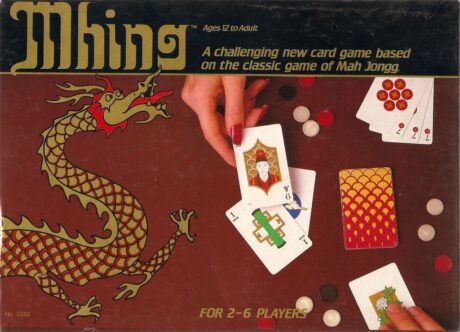
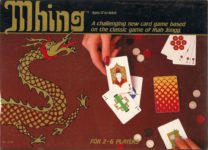
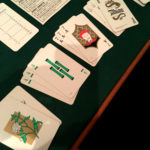
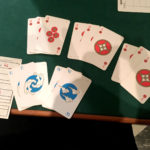
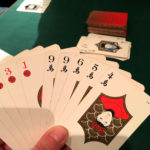




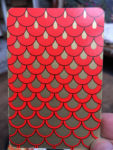


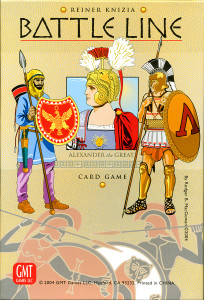

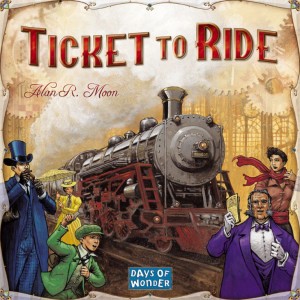
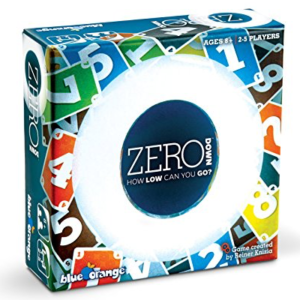
Sam says
Beautiful cards and a neat system of set-collecting that rattles along at a decent pace. I've fond memories of Mah-Jong from childhood, but I think it's part nostalgia and partly the click-clacking of the tiles. The game itself I don't actually pine for, but if you like the set-collecting vibe Mhing does make the experience much quicker to set up and play.